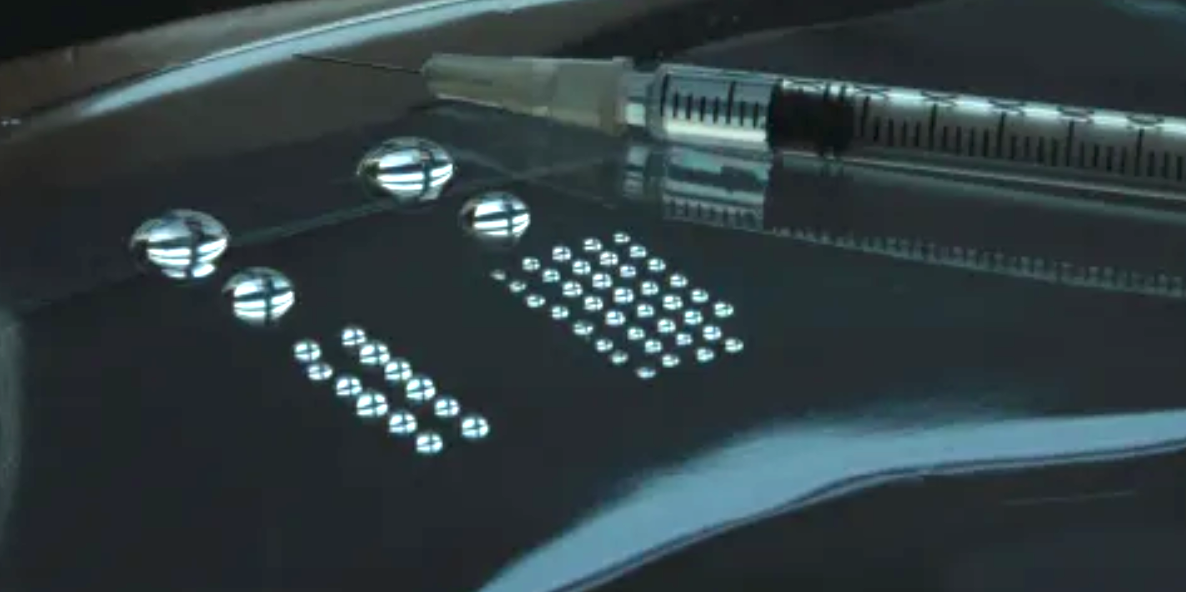Microtoxin, also called meso-toxin, is an advanced injection technique originating from Korea in the 2000s. It has quickly gained in popularity among younger patients. A micro-toxin procedure involves the injection of multiple tiny doses of highly diluted toxin on the intradermal level causing slight muscle weakening – and aiming for a natural look.

https://plasticsurgerykey.com/chapter-11-the-microbotox-technique/#c011_f003
How does Micro-Toxin Differ from a normal toxin procedure?
The major difference between a microtoxin and a traditional toxin procedure is that micro-toxin is injected more superficially and in smaller aliquots. Microtoxin is performed in the dermis or at the interface between the dermis and the superficial layer of the muscle. Bolus size is much smaller than in traditional injection but in far greater number. 1 mL may be injected in up to 100-120 injections. This means that one injection can be as low as 0.0083 ml.

Woffles T. L. Wu, MBBS, FRCS, FAMS. Plastic and Reconstructive Surgery Journal (PRS) November Supplement 2015.
Microtoxin Treatments
A micro-toxin treatment may target delicate facial muscles such as fine lines around the eyes and facial asymmetry. Since the toxin is injected intradermally, a more natural look is achieved; fine lines and wrinkles are reduced without the risk of a “frozen face.”
According to a study published in the Journal of Cosmetic Dermatology, micro-toxin may also be effective for the treatment of mild to moderate acne and rosacea. All 35 patients who exhibited mild to moderate acne proclaimed a prominent positive effect such as a narrowing of pores, a smoothing of post-acne scars, and less pronounced sebum secretion.
Why use Juvapen ?
Practitioners often shy away from this procedure due to its difficulty. Micro-toxin involves the delivery of very small doses injected over multiple injection points. By using a computer-controlled syringe, one may limit the involved guesswork and ensure repeatable and fast delivery.
Juvapen Expert standardizes micro-toxin procedures, improving precision, repeatability and speed. The robotic syringe eliminates the chance of over-injection by ensuring perfect repeatability in doses as low as 0.005ml. Exact amount desired can be entered into the robotic syringe and personalized for each patient or zone.
The practitioner can focus solely on the technique, depth and location. Dosing difficulties are eliminated guaranteeing a natural result with no errors in dosing.

References
Tonnard, P., Verpaele, A. and Bensimon, R., 2018. Centrofacial Rejuvenation. Stuttgart: Georg Thieme Verlag.
Refinery29, P., 2022. Microdosing is the new Botox trend. [online] theaestheticguide.com. Available at: <https://www.theaestheticguide.com/microdosing-new-botox-trend> [Accessed 12 July 2022].
Woo, K., 2020. Clinical Tips and Recent Advances in Cosmetic Uses of Botulinum Toxin Including Mesobotox. [online] Synapse.koreamed.org. Available at: <https://synapse.koreamed.org/upload/synapsedata/pdfdata/1119jkma/jkma-48-1225.pdf> [Accessed 12 July 2022].
Shetty, R., 2018. Dynamic relaxers of the face. Journal of Cutaneous and Aesthetic Surgery, 11(2), p.47.
Wu, W., 2015. Microbotox of the Lower Face and Neck. Plastic and Reconstructive Surgery, 136, pp.92S-100S.